By Kenneth Coale (13 January 2016)
The thesis defense of MLML students requires an oral presentation of their research project including an introduction, materials and methods, results, conclusions and acknowledgements… followed by a closed-door conference with their thesis committee. With a favorable outcome of this conference, the requirement of their culminating experience is fulfilled. I hope to hear about these experiences in following posts.
As an advocate for student mentorship, and, in spite of my great respect for the scientific process, the acknowledgement section is where we find out how MLML touched their lives, shaped their experience, helped them through a trying time, and exactly where when and how their committee friends and family, instilled in them the confidence (and resources) to perceive. I live for this. Their acknowledgements usually run the gambit through their thesis committee members, their cohorts, funding agencies, the library and administration and their family, dog and boyfriend. Yet, unlike any other institution, the acknowledgements always include the Shop Guys. What? I have been to many defenses at other institutions and no student ever recognizes the facilities staff. At most other programs, they usually tell students what can’t be done rather than what can be done. Normal facilities staff are successful when no-one notices what they do (lights on, temperature OK, no roofs leaking). You never, ever, hear a student at SJSU recognize the “Facilities, Development and Operations” department, you never hear a student at UCSC recognize the “Louis Fackler Central Facilities” staff… but at MLML it is different. Perhaps we are closer to the ground. Perhaps as a small laboratory, removed from large institutional support, we are very much more in touch with our physical mortality. Perhaps, when faced with the challenge of actually doing something new in the real physical world, the students have few places to turn. This is where the Shop Guys step in.
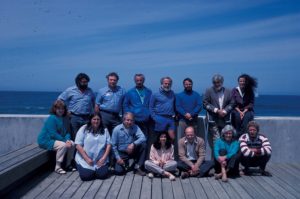
These are the people who know how to get stuff done, in the physical sense. They live at the interface between knowing and doing. They may not know too much about genomics or oceanography, but they know everything about the coding and operations of physical systems, fabrication and repair. Particularly in marine sciences, there is an intersection between the academic and the physical, when it comes to the following problem: How do you take what you know in your head (as many students experience) to something you can hold this in your hands (as all students need to do)? To the Shop, the faculty send them. It is there that the Shop Guys try to understand just what the students are trying to do and either teach them how to build it, or build it themselves, and in many cases, do what the faculty can’t. In addition, that’s where the tools are, that’s where the materials are, that’s where the knowledge is to use the tools on the materials.
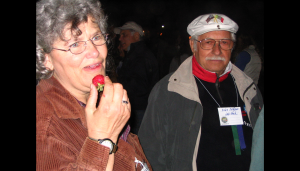
There are many stories about the shop and projects that have been built there. An earlier story reported by Susan Coale recounted the handy work of Ted Brieling, who, becoming sick of fixing mud-clogged outboards and rescuing students stuck in the mud, built the flat-bottom “Slough Boat”, that has lasted now over 40 years. The recent Marine Superintendent, Murray Stein, was so enamored with this boat and its story that he began a renovation project on the original hull…still in service today.
Geology student Carolyn Greene was frustrated by the lack of coring equipment available to reconstruct the deposition history of the nearshore environment and the transport dynamics of the canyon. So, she built her own gravity corer. Learning how to arc-weld and cast lead weights, she built a 400 lb, 10-foot corer that has been used ever since. This corer was recently refurbished for the NSF Eager Program teaching new faculty how to become Chief Scientists. It is rumored that the former captain of the R/V Cayuse (Mike Prince) was so smitten by Carolyn’s “hot metal work” (and can-do attitude), that they were married and raised two grown children before the heat dissipated.
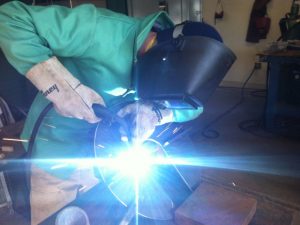
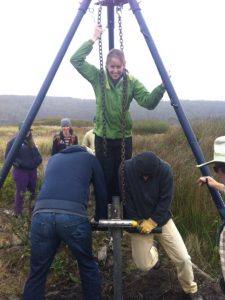
Phycology student Catalina Reyes was trying to attribute algal cover to bottom type throughout Elkhorn Slough. She first tried diving and running transects throughout the slough, but this proved too cumbersome. She and Aldo De Rose came up with an underwater camera tripod (TIG-welded from stainless steel), that could be used to take quick pictures of identical areas from a boat throughout the slough.
Chemical Oceanography student, Rusty Fairey, TIG welded an aluminum frame and pneumatic compression system for obtaining millimeter-scale resolution in pore waters from along the continental margin. The gradients obtained were used to calculate the flux of metals, oxygen and nutrients from the continental margins and Monterey Bay. This device, for a short time, was the preferred method for porewater sampling by state agencies.
All the MLML VERTEX Particle Interceptor Traps (affectionately known as the PITS) were constructed by MLML students and technicians (Sara Tanner, Craig Hunter, Mike Gordon, Madellain Urrere, Susan Coale, Steve Fitzwater, Merrit Tuel, Dale Hebble and others) using the shop. These became a standard for the measurement of carbon flux in the world’s oceans.
Chemical Oceanography student Wesley Heim, developed a polycarbonate sampler (“The Sludge-O-Matic”) that would sample the upper ½ cm of the sediments. This device could be remotely deployed by line, or used by hand (SCUBA). Superficial sediment samples were used to map mercury species and fluxes throughout the SF Bay/Delta complex.
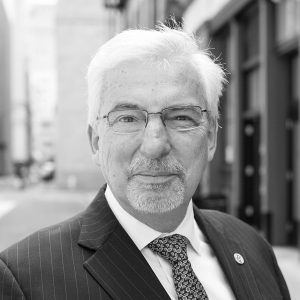
Physical Oceanography student turned technician, Mark Yarbrough, first built his own CTD rosette in the MLML shop as part of the VERTEX program. The design and performance characteristics were published on the cover of Marine Technology magazine. After suffering too many seasick days aboard the Cayuse, Dr. Broenkow turned to optical oceanography. When this occurred Mark built the first marine optical buoy, in the shop at Vertin Avenue, that could be used to calibrate ocean color-sensing satellites. Mark grew the program into what is now known as MOBY, relocated to Oahu, and is now providing vicarious calibrations for all orbiting ocean color sensing satellites and employs many people some of whom are former MLML students.
There are many other creations that emerge every year from Halloween costumes to benthic flux chambers and 90% of all creations are built with schedule 40 PVC. Yet, with new interest, a course is now taught in Marine Fabrication where students are taught how to use all the machinery in the shop. From forklifts to the lathe and mill, students are now putting together Vibracores, fixing Multicores, fabricating microspears, and working on a variety of their own projects. They also tour A&S Metal Recyclers. “If you are going to be in academic construction…” says their instructor, “you’re going to have to learn how to dumpster dive”.
Many students pass through or use the shop during some part of their study. Some use it as a place where they can find materials for their project (note: There are no “Scraps”, ask before you use,,, and oh yea, clean up your mess and, BRING THOSE TOOLS BACK!). Others are looking for advice. Everyone finds something, even barbecued venison from time to time. All are welcome and some find a new skill. Mostly, they connect with the physical world and know a bit more how to be “Shop Guys” themselves.
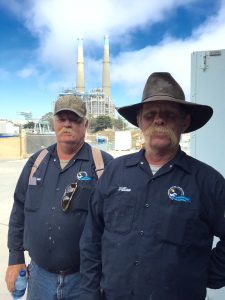
Shop Guys:
John Bell, Shop Support
Ted Brieling, Boat Builder, Rancher
Ken Delops, Electronics/Radio Tech.
Robert Cayce, Electronics Tech.
Tracy Thomas, Captain of R/V Rickets, Shop Support
Preston Watwood, Shop Support, Farmer, Outboard Engine Repair, Agricultural Test Manager
Larry Jones, Educational Facilities Manager, Singer, Songwriter
Ralph Dzuro, Electrician, Factory Worker, Storyteller
Aldo DeRose, Agricultural Fabrication, Welding, Metalwork, Politics, Storyteller
James Cochran, Corrections, Hunting, Construction, BBQ
William Cochran, Fishing Industry, Community Enforcement (unofficial Sheriff of Moss Landing), Pumps and Motors.
Barry Giles, Aquarium Systems, Mideast Desalination, Sustainability
Gary Adams, Food Processing, Mechanical Systems
Kris Machado, Electro-Mechanical Systems, Fabrication, Restoration
Bill Watson (honorary mention), Electrical Engineer, Fabrication, CAD design, Musician.

